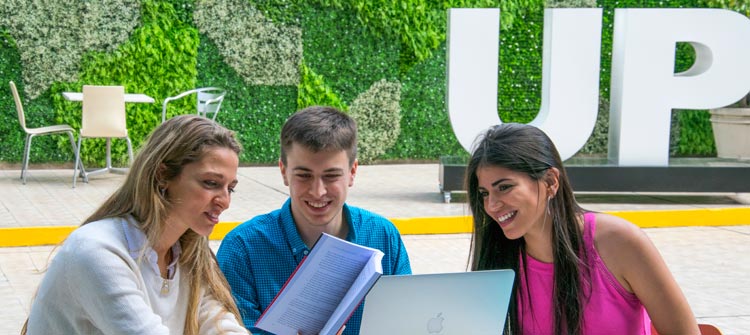
15/09/2019
What Will the University of the Future Look Like?
From being able to study wherever and whenever you like, to immersive learning experiences, the university of the future promises to be an exciting place.

From being able to study wherever and whenever you like, to immersive learning experiences, the university of the future promises to be an exciting place.
With students arriving at university increasingly comfortable using high-tech software and gadgets, and universities needing to innovate in a rapidly changing world, the pace of change at the world’s top higher education institutions is likely to be rapid.
We’ve teamed up with the Universidad de Palermo to explore what the future of education holds.
Immersive learning experiences will no longer be a perk, but a necessity
The intensity that comes with a physical or virtual learning environment stimulates and accelerates learning in a way that traditional learning methods sometimes can’t.
Over the last two decades, the reality of an academic world filled with rapidly advanced technology is, well, a reality. Such learning environments are transforming education, and the Education Lab at the Universidad de Palermo in Argentina is one such example, which facilitates student-centered learning, while also pioneering research into online education.
An innovation lab with a focus on applied education and a mandate to reimagine education, the Education Lab looks to reinvent the way it teaches, capitalizing on state-of-the-art technology and the latest discoveries in the science of learning, while offering the academic community access to world-class education technology.
Blending traditional and non-traditional teaching methods will become the norm
According to the UNESCO Institute for Statistics, an estimated 120 million people will be in higher education by 2030, with 2.3 million of those studying overseas.
As a result, universities and business schools are beginning to offer a wider range of degree programs than they did traditionally, allowing students to study at a time and pace that suits them. This is especially important when you consider how many more students are entering education while balancing family life, a career or both.
One university that does this is the Universidad de Palermo, which offers a range of online, on-campus and blended programs.
With study options going as far as blended learning, students can pick and choose how many online courses and how many on campus courses they take each semester, combining both modalities. This means you could potentially spend your first year studying on campus, before transferring abroad for one semester at a partner university and then finishing your degree online.
Moving between borders and gaining an international outlook
As we’ve already established, more and more prospective students are looking to study abroad. Higher education institutions around the world are therefore continuing to establish strong links and official partnerships with other top global universities and business schools as a way of encouraging international relations between both students and faculty.
As a result, the ability to travel overseas for education and work is becoming much easier. MBA students at Universidad de Palermo have the opportunity to take part in an international exchange program, so whether you take part in an exchange program, study abroad for a semester, or study your entire degree in a whole new country – such experiences allow you to mix, work, and live alongside a wide range of individuals who are from various backgrounds, cultures, races and faiths.
Such international opportunities can enrich your learning experience, and will also allow you to understand and appreciate others’ points of view, which can then help prepare you for a career in a global setting.
Student-focused learning will be essential
Rigid, traditional teaching methods are no match for state-of-the-art technology and e-learning platforms, as universities and business schools cater for the individual student.
Gone are the days when students needed to fit within strict time schedules and inflexible academic boundaries. But what does a student-centered learning education experience actually look like?
Perhaps the biggest change you can expect to see is more schools switching the focus from the teacher to the student. Each student will be allowed to take charge of their own education by choosing their own modules and mode of learning, whether it’s on campus or online.
By doing this, students are active in their own learning and are able to foster the technical and transferable skills when it comes to taking the responsibility of learning in their own hands.
Nota publicada el 15/08/2019, en QSTopUniversities.com
Foto: Universidad de Palermo.
 Whatsapp +54 9 11 38325424
Whatsapp +54 9 11 38325424

